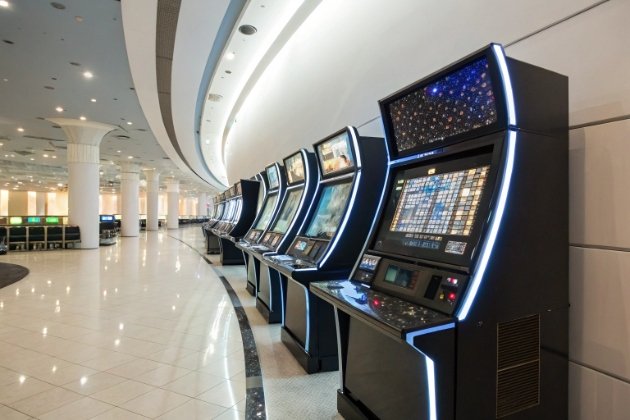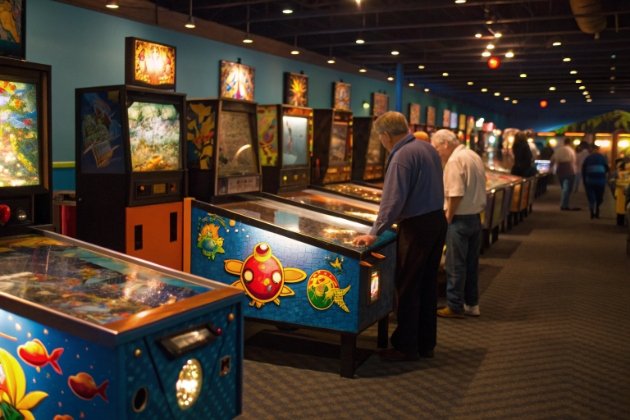In modern gaming environments, reliability is everything. Operators want to ensure that every gaming cabinet runs smoothly, earns consistently, and minimizes downtime. When a cabinet fails, it can cause immediate revenue loss and frustrate players. That’s where remote monitoring and fault diagnosis 1 come in — allowing you to supervise cabinet health, performance, and maintenance needs without being physically on-site.
Yes — today’s advanced gaming cabinets can support remote monitoring systems that track performance, detect faults, and even deploy fixes in real time. This capability has become essential for efficient operations in arcades, casinos, and entertainment centers worldwide.
How Does the Remote Monitoring System Work?

Featured Insight
Remote monitoring works by connecting each gaming cabinet to a central management network 2 that collects real-time operational data. Through Ethernet, Wi-Fi, or cellular networks, the cabinet sends information such as temperature, power status, player activity, and fault codes to a backend dashboard accessible from anywhere.
Each cabinet includes embedded sensors and diagnostic software 3 that continuously scan internal systems — from power supply stability to button responsiveness. The collected data is encrypted and transmitted to the operator’s monitoring portal, where automated analytics identify irregularities before they cause downtime.
Typical data transmitted includes:
- CPU and GPU temperature
- Power voltage and current
- Fan speed and cooling performance
- Game software stability
- Coin acceptor and payout mechanisms
- Player activity logs and uptime
This level of visibility transforms the traditional “reactive maintenance” model into a proactive management system 4, reducing costly surprises.
Can I Track the Cabinet’s Performance in Real Time?
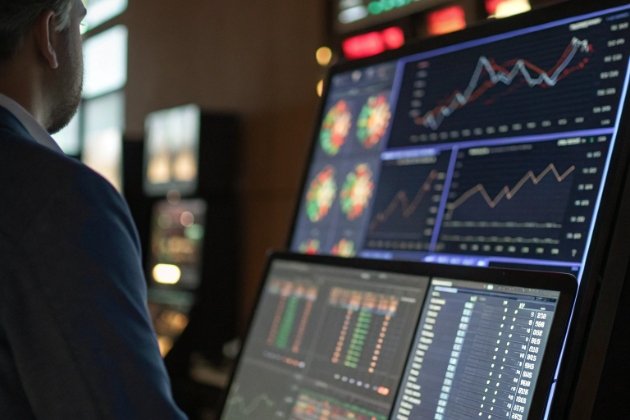
Featured Insight
Yes, remote monitoring enables real-time tracking of every connected gaming cabinet. Operators can access live dashboards that display system metrics, financial data, and operational status at a glance.
| A typical real-time dashboard may show: | Metric | Description | Example |
|---|---|---|---|
| Uptime | Percentage of operational time | 99.8% | |
| Game Sessions | Number of player sessions per hour | 85 | |
| Revenue Flow | Coins or credits processed | $1,240/day | |
| Component Health | Temperature, voltage, fan status | Normal | |
| Fault Alerts | Active or resolved issues | None |
Most systems allow custom alerts and notifications 5 — for instance, an automatic notification when a cabinet’s temperature rises above 70°C, or when the coin acceptor jams. Managers can receive updates via SMS, email, or mobile app, ensuring they’re always in control.
Beyond operational data, advanced systems integrate with business intelligence (BI) dashboards 6, helping operators analyze usage trends, identify top-performing machines, and optimize floor layouts based on player behavior.
This real-time visibility means faster responses, optimized uptime, and a more profitable operation overall.
How Do You Handle Fault Detection and Diagnosis Remotely?

Featured Insight
Remote fault diagnosis is powered by built-in self-diagnostic programs 7 that continuously monitor hardware and software components. When a fault is detected — such as overheating, power fluctuation, or network loss — the system automatically logs an error code and sends a detailed report to the operator’s dashboard.
Here’s how remote diagnosis typically works:
-
Detection
Sensors identify abnormal conditions — e.g., power surges, board failure, or jammed mechanisms. -
Logging
The system stores error details (component ID, time, condition) in the event log. -
Notification
Operators receive real-time alerts with recommended troubleshooting steps. -
Diagnosis
Remote technicians access diagnostic data via secure login to analyze the root cause. -
Resolution
Depending on the issue, the cabinet can be rebooted remotely, software can be patched, or replacement parts can be scheduled.
Some systems even allow remote control access 8, letting authorized technicians modify settings, restart systems, or update firmware to resolve problems immediately — no physical visit required.
The result: faster fault response, reduced downtime, and extended equipment lifespan.
Is There an Alert System for Maintenance and Faults?
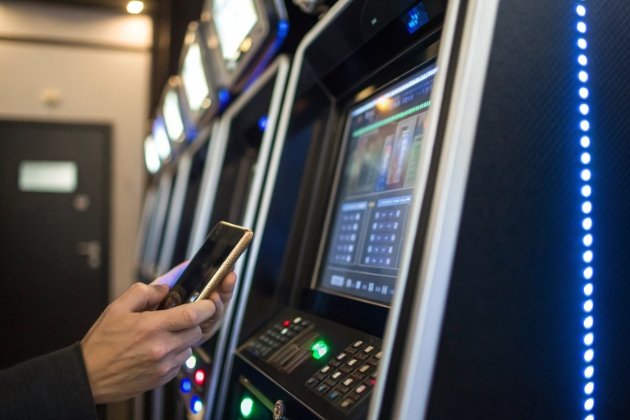
Featured Insight
Yes, most remote monitoring platforms include an automated alert and notification system. When certain thresholds are reached — such as temperature spikes, abnormal current draw, or failed connectivity — alerts are instantly sent to administrators.
Common alert types include:
- Critical Fault Alerts: Power failure, system crash, or overheating.
- Maintenance Reminders: Scheduled servicing or component lifespan expiration.
- Performance Warnings: Slow response, high CPU load, or repeated errors.
- Security Notifications: Unauthorized access attempts or firmware mismatch.
Alerts can be configured with priority levels (critical, warning, informational) and custom delivery methods (email, SMS, push notification).
In multi-cabinet venues, a centralized control system can group alerts by region, category, or technician responsibility for efficient task management.
In high-volume operations, automated alerts act as your digital maintenance assistant — keeping everything running smoothly with minimal manual supervision.
What Are the Key Benefits of Remote Monitoring for Gaming Cabinets?
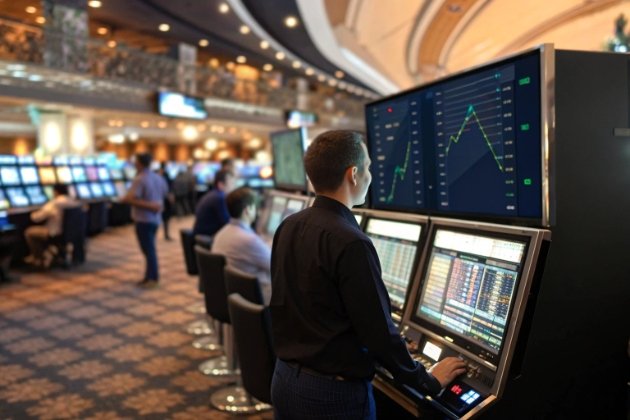
Featured Insight
Remote monitoring isn’t just a convenience — it’s a business-critical capability that enhances performance, reduces costs, and increases reliability. Here are the most impactful benefits:
-
Reduced Downtime
Early detection means issues are fixed before they escalate, keeping games online longer. -
Lower Maintenance Costs
Remote troubleshooting eliminates many on-site service visits, saving labor and logistics expenses. -
Increased Revenue
Higher uptime directly translates to more playtime and better profitability. -
Predictive Maintenance
The system analyzes trends to forecast component failures before they occur. -
Centralized Oversight
Manage dozens or even hundreds of cabinets from a single dashboard — ideal for multi-venue operators. -
Data-Driven Decision Making
Operators can track performance metrics to guide upgrades, game selection, and placement strategies. -
Enhanced Player Experience
Smooth performance and minimal interruptions lead to higher satisfaction and repeat play. -
Operational Transparency
Every alert, fix, and update is logged for full accountability and compliance. -
Energy Efficiency
Monitor power consumption to optimize cabinet settings and reduce utility costs. -
Scalability
Easily expand your network as your business grows without losing visibility or control.
These combined advantages make remote monitoring an indispensable tool for any modern gaming operation.
Security and Data Protection in Remote Monitoring
Featured Insight
With remote connectivity comes the need for strong cybersecurity. Leading manufacturers design their systems with end-to-end encryption 9, multi-factor authentication, and role-based access control to ensure safety.
Key security practices include:
- Encrypted Communication between cabinet and server using SSL/TLS.
- Access Control Policies defining roles for technicians, managers, and administrators.
- Audit Logs that record every remote action and configuration change.
- Regular Firmware Updates to patch vulnerabilities.
- Isolated Network Architecture separating monitoring traffic from payment systems.
These security layers protect against data breaches, tampering, or unauthorized remote access — ensuring both operational integrity and regulatory compliance.
How Remote Monitoring Shapes the Future of Gaming Operations

Featured Insight
As gaming technology evolves, remote monitoring is becoming the backbone of smart arcade ecosystems 10. It bridges data analytics, automation, and AI-driven decision-making.
Future cabinets are expected to feature:
- AI-powered predictive diagnostics that learn from historical faults.
- Cloud-based management dashboards integrating with POS and CRM systems.
- Automated patch deployment for firmware and content updates.
- Global monitoring platforms that allow international operators to manage distributed networks.
This shift transforms the gaming floor from isolated machines into a connected, intelligent environment — optimizing performance at every level.
By adopting remote monitoring early, operators position themselves ahead of competitors in efficiency, reliability, and technological sophistication.
Conclusion
The question “Do the gaming cabinets support remote monitoring and fault diagnosis?” has a clear answer: absolutely yes.
Modern gaming cabinets are engineered not just for entertainment, but for operational intelligence. Through network connectivity, real-time analytics, and predictive maintenance tools, operators can manage, troubleshoot, and optimize every cabinet remotely.
This technology minimizes downtime, reduces costs, and ensures players always enjoy a seamless experience. In an industry where every minute of uptime matters, remote monitoring isn’t just an upgrade — it’s a competitive advantage.
Footnotes
1. Overview of remote monitoring and fault diagnosis systems. ↩︎
2. Introduction to central management networks in enterprises. ↩︎
3. Embedded sensors and diagnostic software applications. ↩︎
4. Benefits of proactive maintenance systems. ↩︎
5. How custom alerts improve system monitoring. ↩︎
6. Business intelligence dashboards for data analysis. ↩︎
7. Using self-diagnostic programs for equipment monitoring. ↩︎
8. Remote control access tools for troubleshooting. ↩︎
9. End-to-end encryption for secure remote monitoring. ↩︎
10. Smart arcade ecosystems using IoT and AI. ↩︎

